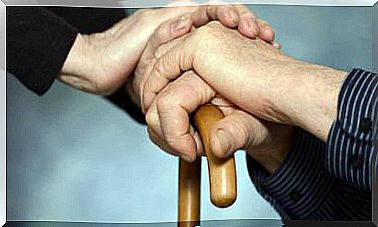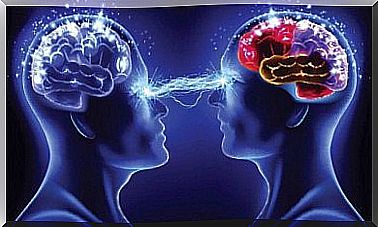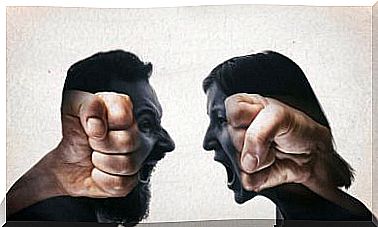What Is The “report “? Discover The Best Techniques To Establish A Good Therapeutic Alliance
The word “rapport” refers to the bond between two or more human beings, the psychological and emotional tuning that is needed so that changes can occur on one side or the other.
The school, the prior psychological assessment or the techniques used during the treatment are very important with regard to the treatment of the patient. However, it is no less important to establish a good relationship with him / her, so that he / she has full confidence in us and feels motivated to face the treatment.
Nothing serves all the rest if we do not have the feeling with our patient, since this will have negative repercussions on the rest of the variables: the person ending the follow-up of the therapy, will not perform the necessary exercises between different consultations, will not be motivated to achieve change, nor will he trust what he is offered or indicated as strategies.
Therefore, when we talk about therapeutic relationship, we are referring to the mutual understanding, collaborative attitude and empathy necessary for two people to approach a common problem and achieve desired goals. It is such an important therapeutic element that today it is already taught to future therapists in universities, and there are even specialized courses intended to train different professionals, especially in the field of therapy. health sector, who will have to deal with cases of patients presenting problems which, to be solved, will require collaboration.
The therapeutic alliance, or relationship, was developed throughout the twentieth century. In 1912, Freud, the famous psychoanalyst, already envisaged in his work entitled The Dynamics of Transferencia the need for an analyst to have an interest and an understanding attitude towards his / her patient: the objective with this “strategy” was that the healthiest part of this last time establish a positive relationship with the therapist.
Freud, in his early writings, defined the patient’s affection for the therapist as a beneficial and positive form of transference. Let us not forget that for the psychoanalyst, transference is the psychic function through which the client transfers his / her thoughts and other emotions to another person, in this case the therapist.
This transferential aspect may have promoted confidence, acceptance and credibility in the therapist’s interpretations, as we explained to you earlier. However, later, we could see that it was not the transfer understood as such that generated this trust and this climate of mutual collaboration between the professional and the client, since sometimes misunderstandings could arise. in the relationship and that it was by no means positive.
Even more, the concept of relationship or alliance has been adopted by the majority of therapeutic schools, moving away from the transference reading provided by the psychoanalytic context. According to Rogers, father of the humanist school with Abraham Maslow, special attention must be paid to the quality of the therapist / patient relationship. Rogers then proposed three fundamental characteristics that the therapist should exhibit: authenticity, unconditional acceptance of the patient, and empathetic understanding.
According to this author, the probability of therapeutic progress depends less on the personality of the therapist and his / her attitudes than on the way in which these are experienced by the patient in the therapeutic relationship. For the interpretation to be positive, it is essential that they feel understood (that there is empathy) and accepted without conditions.
Subsequently, Bordin, in the 1970s, discovered the common characteristics that must exist in the therapeutic relationship of all schools ; this author has identified three components that configure the relationship: agreement on tasks, positive link and agreement on objectives.
The two fundamental pillars on which the report is currently based are trust and smooth communication. When we talk about fluent communication, we don’t mean that the latter has to be symmetrical, but the important thing is that therapist and client understand each other on all levels: verbal, and non-verbal.
Communication, in reality, must be asymmetric: the patient must intervene much more than the therapist. Some of the techniques that have proven to be effective in establishing good rapport are:
It is a simple technique a priori , but that we often have difficulty in carrying out. It is a question of listening to what the patient has to tell us without interrupting him / her, with the predisposition not to make any value judgment, but by showing through gestures and expressions that we are there, that we listen to it attentively and understand what it wants to convey to us.
For a good rapport to exist, it is extremely important that the therapist be warm to his / her client. A professional can know a lot of techniques, have a lot of knowledge and have a lot of experience. However, if they are not warm to their patient, it will not help much.
As we explained to you previously, the person will not be able to trust his / her therapist, they will not open up to him / her and, therefore, much of the information will not be brought up. In addition, the lack of confidence will have a direct impact on the patient’s degree of commitment to the therapy: low confidence will increase the chances that the patient will not do the exercises that the therapist does. ask him to practice outside of consultations.
It is obvious that putting yourself in the shoes of the person you have in front of you is essential if you want to help them. It doesn’t matter whether our patient is someone with an emotional disorder or an offender. If you are to deal with this person, you have to see the world from their perspective, even if you don’t share their feelings and even if you don’t believe their actions are right. It is only by being empathetic that we will generate trust and be able to help the person.
As we have said, for the therapy to run smoothly, it is very positive that the patient feels confident and comfortable when they consult their therapist. To generate confidence, in addition to everything we have just commented on, we must be credible, in addition to appearing to be.
The person must perceive that we are professionals, that we are properly trained and that, if in some aspect this is not the case, we will do everything in our power to give an answer to his request as soon as possible by redirecting it to another professional or by training us in this concrete aspect. This will give the patient confidence that they can be helped.
This point refers to the need to focus attention on common interests. In this case, to move towards the therapeutic objective which was initially set by the client. It is important for all that not to deviate from the subject and to end up talking about common points, of course, but which have nothing to do with the objective set. In this case, we would lose time during the session and finally the expert / client relationship would cease to be asymmetrical, which is not wise.
However, it is good to be flexible and create a relaxed atmosphere during the session that allows us to talk about things that are a bit away from the objectives to be achieved, but always being careful not to fall into the trap that we are just described.
We must try to be attentive when communicating with our patient, since often something can be said that may be inconsistent with our expression or gestures. Coherence between verbal language and non-verbal language is fundamental in the therapeutic relationship since without it, there would not be the possibility of generating the climate of trust and collaboration of which we have just spoken.
Therefore, it is necessary, as Rogers said, that we be authentic with our patient. By always paying attention to forms and maintaining quality, acceptance and empathy, but without generating any inconsistencies between our verbal and non-verbal languages when expressing ourselves in front of our patient.
Even if all these techniques may seem like common sense, what is certain is that they are not easy to put into practice when dealing with a patient in consultation: the therapist is also a human being, with his own values, his own attitudes, his own emotions, etc., and very often they have to be left out of therapy so that the latter can take place in the best conditions.
Even so, it can happen that we fail to establish a good relationship with the client and we should not feel disappointed by this. Just as in informal relationships it can happen that we don’t have a good feeling with someone, in the therapeutic relationship it can also happen, even if we do everything we can to make things go well.
In this case, the most honest and the most sensible thing is to redirect the patient to another professional with whom he / she can develop a better therapeutic alliance and continue to develop personally. This way, neither party wastes time, and both can move towards what really interests them: the patient’s recovery.









